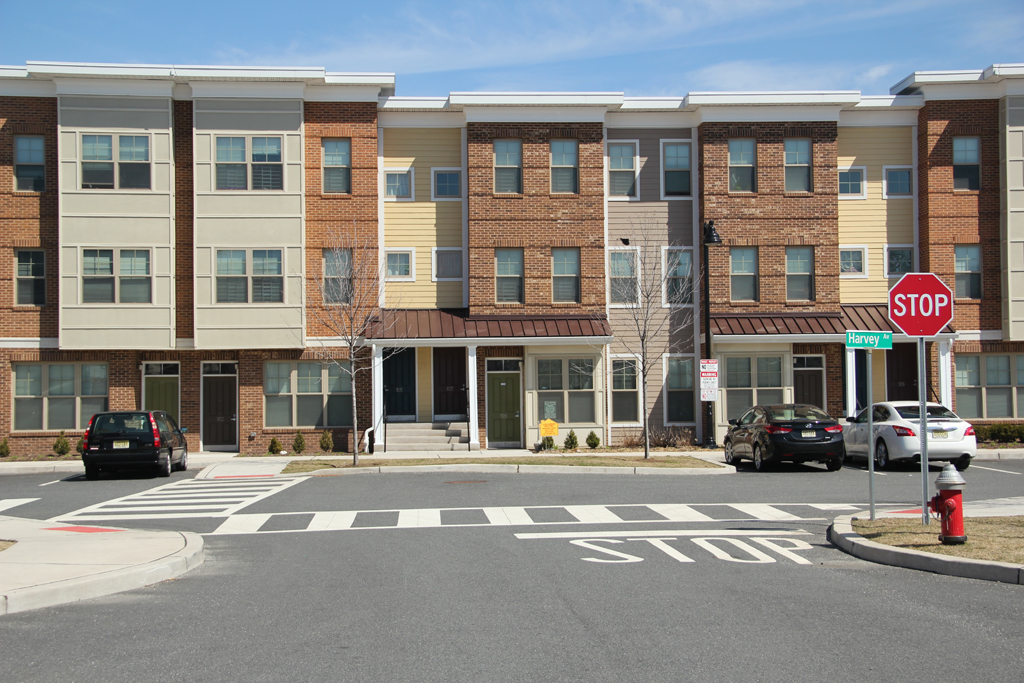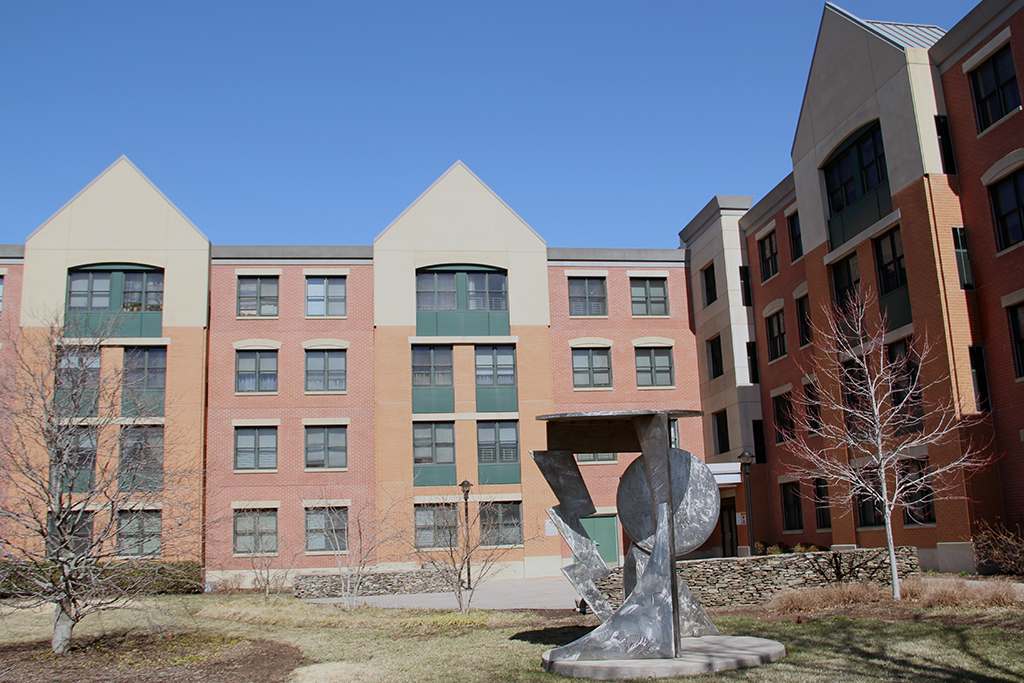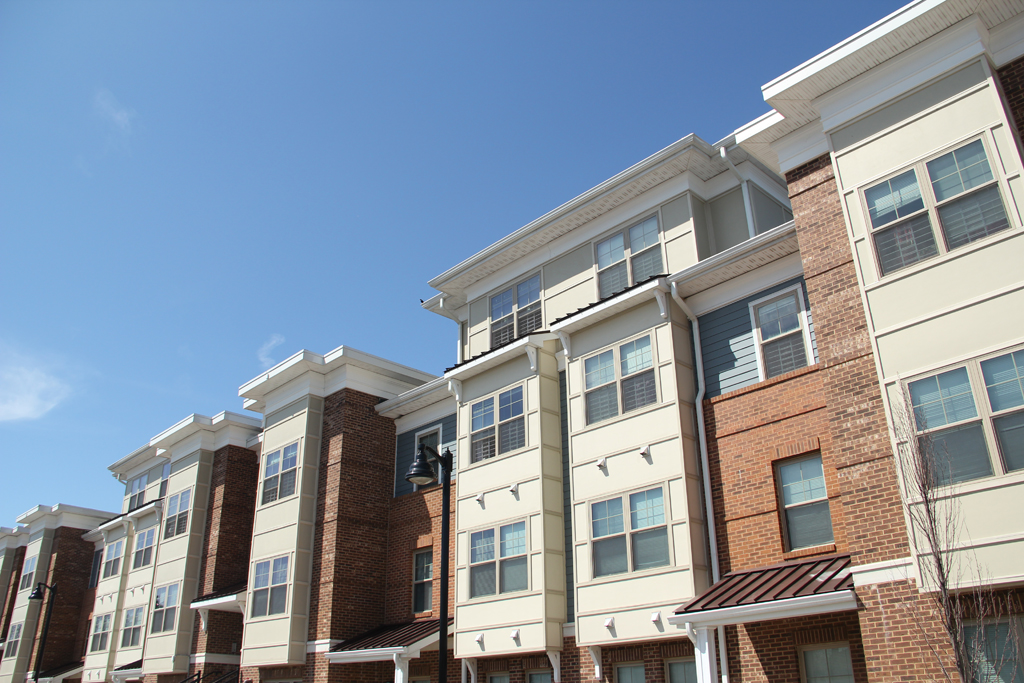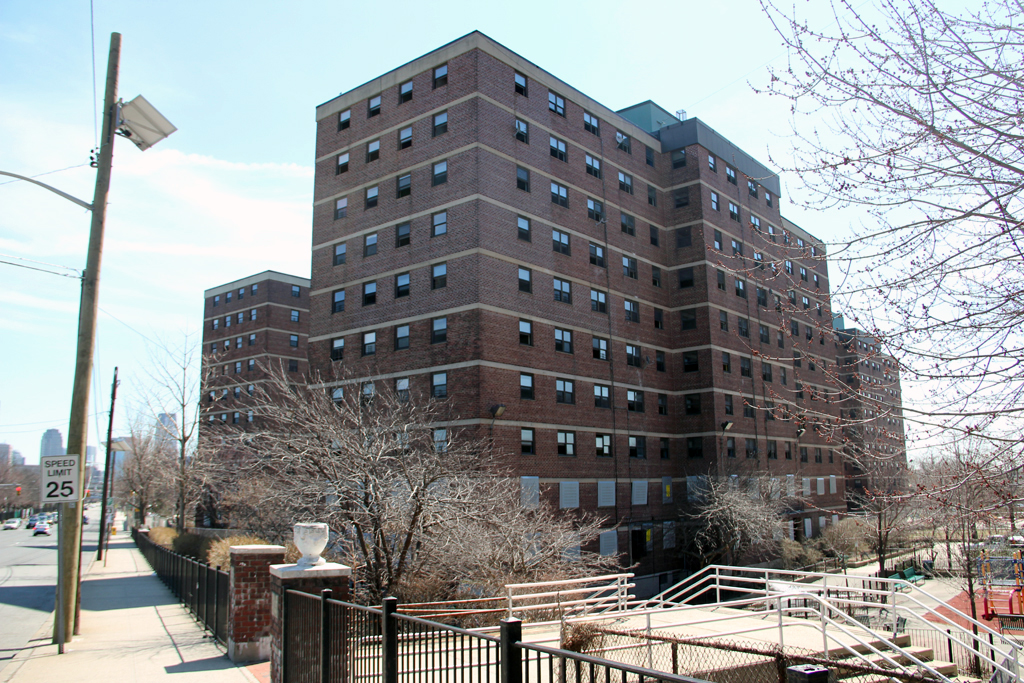Profiles in Public Service
Conversations with public servants illuminate the complex workings of city government and how local agencies shape the physical and lived experience of the city.
Celebrate ten years of Urban Omnibus and support ten more years of fresh, independent perspectives on citymaking with a donation today!
We think of housing as a local issue: mayors talk about the need for affordable housing in their cities far more than other elected officials; municipal agencies manage public housing projects; community-based organizations focus their advocacy close to home. However, since the very first government interventions in urban housing markets soon after the Great Depression, the federal government has shaped local policy, establishing funding guidelines that influence how cities build, maintain, and in many cases, demolish public housing. We are hearing a lot these days about the New York City Housing Authority whose exceptional size and scale demand exceptional thinking and solutions, especially in the face of dwindling support from Washington. But the housing authorities of the cities and towns that surround New York are no less sensitive to shifts in federal funding. And, in many cases, they have to be even more creative in how they leverage their assets.
Brian Loughlin is the chief architect for the Jersey City Housing Authority (JCHA). In the conversation below, he takes us on a tour of some of the housing projects JCHA has renovated or rehabilitated, and along the way offers a crash course in the real-world implications of federal programs like Section 8, HOPE VI, and Choice. Jersey City Mayor Steven Fulop recently announced new public investment in affordable housing. But the commitment to maintaining the number of subsidized units available in Jersey City, in an era when the demolition of public housing is more common than new construction, has a long record. Loughlin demonstrates how that record has required architectural innovation, policy acumen, and deep attention to the needs and desires of residents.– C.S
What brought you to the Jersey City Housing Authority?
I always wanted to work in the public or nonprofit sector and have done so for most of my career. I live and work in Jersey City, which in a way means I practice what I preach. I bring my kids to community meetings. It shows a level of investment that I think people take more seriously. Prior to joining JCHA in 2003, I had lived in Jersey City all through graduate school in architecture, and then I was working in New York City for James McCullar and Associates doing architectural work for the New York City Housing Authority.
I am the chief architect for the JCHA, which means I oversee the design of our new construction and rehabilitations, taking into consideration rough density counts and overall sizes. After the preliminary phase, we’ll bring in a developer partner with an architect and a planning team to develop those ideas further. We oversee all designs and add our own tweaks before we approve them.
Intellectually, I find it to be one of the most challenging jobs you can do. It’s not immediately clear what the role of design is in a public housing authority. There are some people that will say that the only direct connection between design and affordable housing was buildings like Pruitt-Igoe or programs like HOPE VI. I would challenge that: there’s more nuance. You have the opportunity to work as a designer, with the community, at a much broader scale. My job is as the architect for public housing residents and for the larger community.
To what extent is public housing considered a part of a more holistic attempt to create a housing plan in Jersey City?
Public housing is a significant part of the affordable housing landscape here. It used to be a much more substantial part of the housing supply before the population grew, but with the Housing Authority responsible for more than 5,000 units and with Jersey City’s population of a little over a quarter million people, in 100,000 households, we’re more than 5% of the housing stock.
But to a degree, it’s not a bad idea for cities like Jersey City to take a step back from traditional public housing, as long as they don’t also step back from their responsibility to ensure that alternatives for truly affordable housing exist. I think Mayor Fulop’s Administration would do well to develop an affordable housing plan. [Ed. Note: Since this interview was conducted, Jersey City Mayor Fulop announced a housing plan.] You can’t account for the inequities in the market through public housing alone. Being right next to New York, with huge disparity between incomes and housing prices, Jersey City doesn’t look that bad. But when you compare us to the national average, it’s probably only second to New York or Chicago in terms of that disparity.
I’m not sure Jersey City yet recognizes that we have to provide affordable housing to attract the workers we want to live here. This concept of “workforce housing” covers those segments of the market between where the public subsidies stop and where the market starts at upwards of 150%, maybe even 200% of the area median income. There’s a huge gap in the current housing makeup; we don’t meet those needs. And in a way, it becomes hard for the folks who in theory could “move up and move out” of public housing projects, because there’s nothing to move up and out to. The upper half of the housing market creates this ceiling that keeps them in place. And on the other end, there are so many people that would move into public housing given the opportunity, but our waiting list is closed. We just don’t have the space.
Jersey City’s second to New York in a lot of regards: it’s the second most culturally diverse city in the United States, the second densest city in the country, the second most walkable city, all to New York. And we have some similar development dynamics. We had a warehouse down by the water with all sorts of artists squatting and creating live/work spaces. Then the owner realized there was an opportunity once the market turned, so everyone was evicted with the blessing of City Hall to make way for a now-stalled Rem Koolhaas tower.
Tell me about the history of HOPE VI and Jersey City’s experience with it.
HOPE VI (Housing Opportunities for People Everywhere) is a program of the federal Department of Housing and Urban Development (HUD). It began in the early 1990s, during the George H. W. Bush administration, with a study on distressed public housing. The idea was to replace that stock with new housing and include a greater mix of incomes. What came out of the early funding, which started in ’98, was a program largely used by cities as a demolition tool. What often happened was that a city would tear down 100 units and replace them with between 30 and 50 units, only a third of which were traditional public housing units. The other two-thirds were affordable housing subsidized by tax credits or market rate units. When you tear down 100 public units and only replace 15, you’re drastically reducing the inventory.
The JCHA has been able to get very close to doing one-for-one replacement of units demolished with HOPE VI funding by creating highly affordable units with tax credits and providing Section 8 vouchers, so-called “soft units.” That’s possible in part because we have an economically diverse population currently in public housing. There are folks that earn from 0% all the way up to 80% of the area median income. We were able to meet the emphasis on income mixing in HOPE VI with people that were already in public housing just by shuffling people around a little bit and ensuring their right to return to the housing. Ours is not your typical model because we’ve actually created a lot of units, and I think that is one reason why we’ve gotten three HOPE VI grants. We’re by far the smallest housing authority to receive that many.
Are there form-based aspects to HOPE VI? How are design guidelines expressed in the legislation?
It is not form-based per se, but there were two basic documents that came through HUD that codified some design elements. One of them was a basically a reprinting of Oscar Newman’s “Defensible Space,” and the second were guidelines coauthored by HUD and the Congress for New Urbanism. These guidelines pushed for eyes on the street, individual front doors, and keeping everything to three to four stories. In terms of style, however, there was no specific push for the new traditionalism — gabled roofs, etc. — that has come to characterize HOPE VI-funded housing.
What’s interesting from an architectural standpoint is that the New Urbanism guidelines provided the sheep’s clothing that allowed us to build these developments in neighborhoods that would normally have pushed back against having public housing. Our office had to get the community to realize that this is not your traditional understanding of public housing: the buildings are going to be mixed income, better designed, and better maintained. This is one of the requirements of HOPE VI and something that we want to do: you’re not only supposed to put back architecture that’s sensitive to the surrounding area, but to also work with local residents that are affected by that new construction. So as much as New Urbanism gets a bad rap — and, personally, I have issues with it stylistically — it enabled us to build affordable housing. Once we started doing it, our public housing residents and the people in the wider community were a lot more inclined to support the projects because they looked familiar, and certainly not like stereotypical public housing.
So how does that redesign process work, and does design have a role in how the JCHA has been able to approach one-for-one replacement of demolished units?
We start by working with the community to identify which sites need to be redeveloped or revitalized and the ways in which they want to see that take place. For this site, Lafayette, the community really came to the housing authority and said, “This is not working anymore. We need to start over.” We worked tightly with that group to demolish all 15 walk-up, garden-style apartment buildings and then built the community back. We started the process in 2000-2001 and should be done by the end of next year. Again, the climate of HOPE VI in general was that of a demolition tool, so we were asking, “How do we use this tool to take down buildings but also put something back?” You can look at some of the developments done by the Chicago Housing Authority after they tore down the Robert Taylor Homes and Cabrini-Green. Very low-density communities replaced them, and those communities are just dying.
What we’ve realized is that if you’re able to get close to equal or higher density than what was there before, it’s going to function better. HUD has a design review process, where they’ll look at your drawings and identify where they see problems based on the guidelines. We use all sorts of sleights of hand to satisfy these while adding more housing back to the site. For instance, here we’ve got six units on an individual door which previously was a huge no-no; and in these buildings, through stacking units or getting units to interlock at the back of the building, we created a situation where a front door, which looks like it represents an entire volume, actually serves the upper two doors on the left side, while another door serves the upper two floors on the right side, and a third and a fourth door provide access to two additional units that spread across the entire ground floor of the building. We’ve gotten away with this additional density because it fits in with the fabric of this larger community.
This giant public walk is another no-no because it’s not “defensible” by any stretch, except for the fact that we’ve got all eyes on it. When we first started doing HOPE VI, elements like walls that you can sit on, benches, and trash cans were not allowed. But we’ve slowly reintroduced them, which more than anything is a testament to the community that’s here taking care of the public spaces.
We also butted heads with HUD over this senior building. In working with the community we realized that when you start to tear things down and upend a community, there’s a major concern for prioritizing the care of kids and seniors. So we’ve tried to make a senior building the first phase of the project. Once everyone feels like the seniors are safe and accounted for, you can start to see other pieces move. But to accommodate them we were putting two-bedroom units in an elevator building, which HUD sees as opening the door to putting four-bedroom units back in ten-story towers-in-the-park. They wanted only one-bedroom units, but we were able to convince them that two bedrooms were not necessarily a bad idea because they’re for seniors and not families.
How does the former Lafayette compare to what you have now?
The former Lafayette was 490 units in three- and four-story, brick box walk-ups. With this last phase, we’re close to 350 units, plus if you include Section 8 vouchers and off-site housing we’re very close to one-for-one unit replacement. Almost half are public housing units, and maybe another third are affordable units subsidized with tax credits, and the rest market-rate or Section 8. For what we’ve developed in the footprint of Lafayette, we received the 2010 Award of Excellence in Project Design from National Association of Housing and Redevelopment Officials.
I’m sure every site is different. How else have you had to design to fit into the constraints of federal regulations?
This site, A. Harry Moore, is interesting because we had a much higher density here than we did at Lafayette. We had to figure out ways to get more buildings and more density on the site while keeping them at three or four stories. When we go over a fourth story, we have to pay a higher, commercial wage rate to the building trades. Your plumber just went from making $40 an hour to $80. And as you can imagine, it makes these buildings a lot more expensive to build. So we did a lot of back-to-backs, where we would essentially get rid of the back doors, which allowed us to almost double the density. We also have fourth floors popping up in spots. They are understood as “mezzanines” because their floor area is not more than 50% of the floor area of the room below it, so it doesn’t count as a full story.
One thing we’re still grappling with is parking. We’ve slowly been able to convince Jersey City’s planning department not to require as much parking as was there before by explaining that many of our residents don’t have cars. We would usually have had to include one and a half parking spaces per unit, and we’ve gotten it down to almost half a space per unit.
What sort of shifts in HUD funding requirements have you seen over your time at JCHA, and what do think the future holds for federal funding?
With each allocation of funds, the wording changes a little bit. Most recently, HUD was looking for 100% or one-for-one replacement of what they call hard units. So essentially where you have a public housing unit, you have to put back a public housing unit. That’s a culture shift within HUD, because they used to say this replacement could come from soft units: Section 8 vouchers and tax credit units. We realized that to make this new requirement financially feasible, we not only need to replace 100% of the public housing units; we also need to add an equal number of tax-credit and market-rate units, effectively doubling the amount of housing units that existed before we started. The number of additional non-public housing units we have to include is not directly mandated, but the funding is such that the subsidy for public housing units is not enough to enable public housing units to stand on their own, so you have to use the additional subsidies available through tax-credit units and the revenue streams that come from market-rate units to make a one-for-one replacement work. This brings with it the added benefit of income mixing — which HUD does like to see — but the land acquisition required can also be a deal breaker.
But HOPE VI is done. There’s still HOPE VI money being spent and units being built, but there will not be any future allocations. HUD is replacing it with the Choice Neighborhood Initiative. In a nutshell, Choice indicates a shift from an exclusive focus on the site and the immediate surroundings to the overall neighborhood. HOPE VI evolved along that trajectory, by making the sites more porous, stitching them back into the urban fabric, providing some community services for the entire neighborhood on site, and getting some residents to move off site. JCHA is a fantastic place to work in this respect because we have a wide range of housing sites including HOPE VI sites that have been complete for ten years now, so you get to see how these sites age and become integrated back into the neighborhood. Then you can compare them with traditional public housing complexes where we haven’t done any redevelopment, and they still have a cultural “moat” around them. To read the HUD tea leaves, I think the one-for-one replacement means that if you are going to get rid of HOPE VI funds and strip that down to a much smaller allocation of Choice funds, then you’ll need to make sure that whatever units you do take down you are putting back, so that Choice is not seen as another tool solely for the demolition of public housing.
But Choice will probably be a very small part of future housing funding. There’s a big push towards RAD — Rental Assistance Demonstration — which started out as another project-based voucher program, not unlike Section 8, but has subsequently morphed into a much different program. If HUD policy shifted to an exclusive use of RAD, then a lot of these public housing sites will continue to be on life support: it doesn’t really increase the funding; it just opens the door for other funding streams to come in at the same time — which brings along their own set of risks, and generally shows HUD backing away from direct investment in traditional public housing.
On the other hand, if HUD shifted toward all Choice funding, I think that would be fantastic because it would show significant investment. It would signal recognition, on the part of HUD and the federal government, that public housing sites can be catalysts for neighborhood transformation, whereas RAD is much more insular. It goes back to the days of creating a moat around public housing sites. Federal support for traditional public housing is dwindling at an alarming rate, so everything’s an option right now.
A lot of these projects essentially live and die by the funding and land that you get. I think we have to rearrange the relationship between the funding and what is being funded. As long as we’re heavily relying on funding like tax credits, public or affordable housing just becomes a vehicle for large-scale private investment, while each development gets less and less public funding. If there is funding and land, we can absolutely double the amount of housing available, including the one-for-one replacement of hard public housing units that I hope we can achieve in our Transformation Plan for Montgomery Gardens. It’s not like there’s a shortage of places to build or rehabilitations to be done. It’s just whether or not we’ve got the funding to pull it off.
The views expressed here are those of the authors only and do not reflect the position of The Architectural League of New York.
Conversations with public servants illuminate the complex workings of city government and how local agencies shape the physical and lived experience of the city.






